Fine English Knife and Fork Dated 1701
A Fine English Knife and Fork Initialled ‘E I’ and Dated 1701
The Ivory handles with silver inlay designs of ‘Tulips’ and ‘Spiralling Leaves’ highlighted with ‘sealing wax’ and dyed ‘green’ ivory inlay
Cutler ‘mark’ for Ephraim How
Silver, steel, sealing wax, ivory
Original leather sheath
England
18th Century / 1701
SIZE: Knife: 19cm long - 7½ ins long / Fork: 16.5cm long - 6½ ins long
The Ivory handles with silver inlay designs of ‘Tulips’ and ‘Spiralling Leaves’ highlighted with ‘sealing wax’ and dyed ‘green’ ivory inlay
Cutler ‘mark’ for Ephraim How
Silver, steel, sealing wax, ivory
Original leather sheath
England
18th Century / 1701
SIZE: Knife: 19cm long - 7½ ins long / Fork: 16.5cm long - 6½ ins long
A Fine English Knife and Fork Initialled ‘E I’ and Dated 1701
The Ivory handles with silver inlay designs of ‘Tulips’ and ‘Spiralling Leaves’ highlighted with ‘sealing wax’ and dyed ‘green’ ivory inlay
Cutler ‘mark’ for Ephraim How
Silver, steel, sealing wax, ivory
Original leather sheath
England
18th Century / 1701
SIZE: Knife: 19cm long - 7½ ins long / Fork: 16.5cm long - 6½ ins long
The Ivory handles with silver inlay designs of ‘Tulips’ and ‘Spiralling Leaves’ highlighted with ‘sealing wax’ and dyed ‘green’ ivory inlay
Cutler ‘mark’ for Ephraim How
Silver, steel, sealing wax, ivory
Original leather sheath
England
18th Century / 1701
SIZE: Knife: 19cm long - 7½ ins long / Fork: 16.5cm long - 6½ ins long
Ephraim How, became a freeman of the Cutlers Company in 1682 and Master in 1706, he died in 1720. The cutlers mark used was a ‘heart and crown’ ‘How’, and also a ‘dagger’.
With the restoration of the Monarchy in 1660 the short and rather severe puritan knife began to be replaced with a longer blade, curved and spatulate at the tip, which eventually acquired a distinct sabre look with a pistol shaped handle. Much of the surviving cutlery from this mid 17th century period seems to be quality pieces such as these examples, which have been treasured and preserved as family heirlooms. As England recovered from a long period of Puritanism and with the crown reclaimed by Charles II who was used to European dining practices and extravagance and ornament at table, cutlery became more luxurious and a gradual refinement in manners gave rise to a more common usage of the fork.
With the restoration of the Monarchy in 1660 the short and rather severe puritan knife began to be replaced with a longer blade, curved and spatulate at the tip, which eventually acquired a distinct sabre look with a pistol shaped handle. Much of the surviving cutlery from this mid 17th century period seems to be quality pieces such as these examples, which have been treasured and preserved as family heirlooms. As England recovered from a long period of Puritanism and with the crown reclaimed by Charles II who was used to European dining practices and extravagance and ornament at table, cutlery became more luxurious and a gradual refinement in manners gave rise to a more common usage of the fork.
Ex Private English collection
SEE: For a similar late 17th Century English eating knife, from the Bill Brown collection, Finch and Co item no. 28b, catalogue number 30, Summer 2018 and also a pair of late 17th Century knife and fork from the Roger Warner collection, item no. 59, catalogue number 15, Autumn 2009
SEE: For a similar late 17th Century English eating knife, from the Bill Brown collection, Finch and Co item no. 28b, catalogue number 30, Summer 2018 and also a pair of late 17th Century knife and fork from the Roger Warner collection, item no. 59, catalogue number 15, Autumn 2009
Fine English Knife and Fork Dated 1701
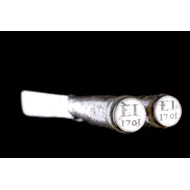
SOLD
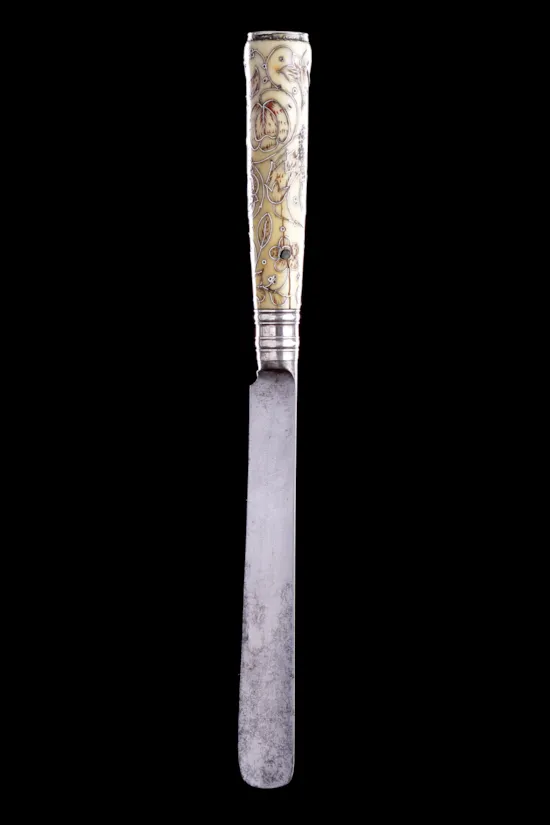
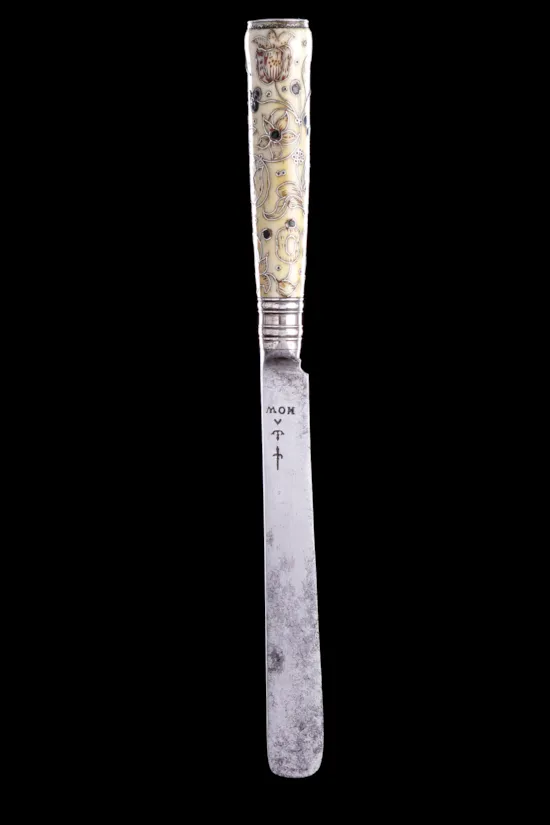
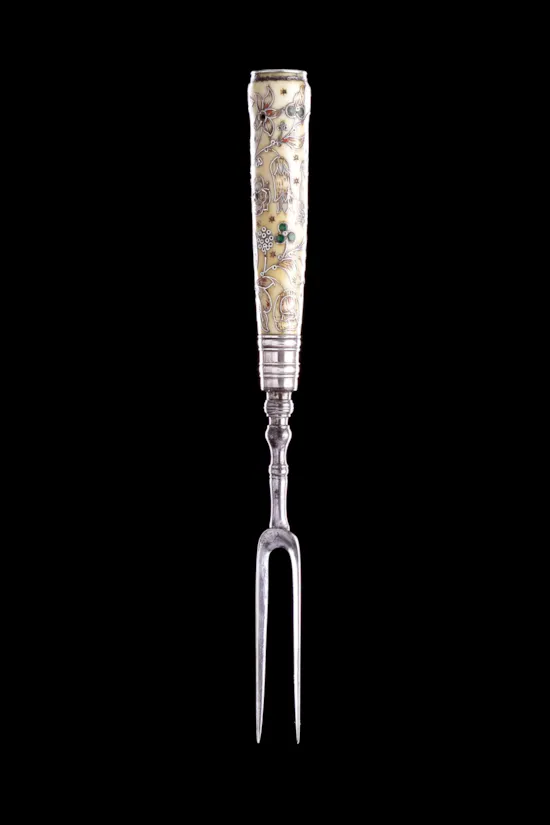
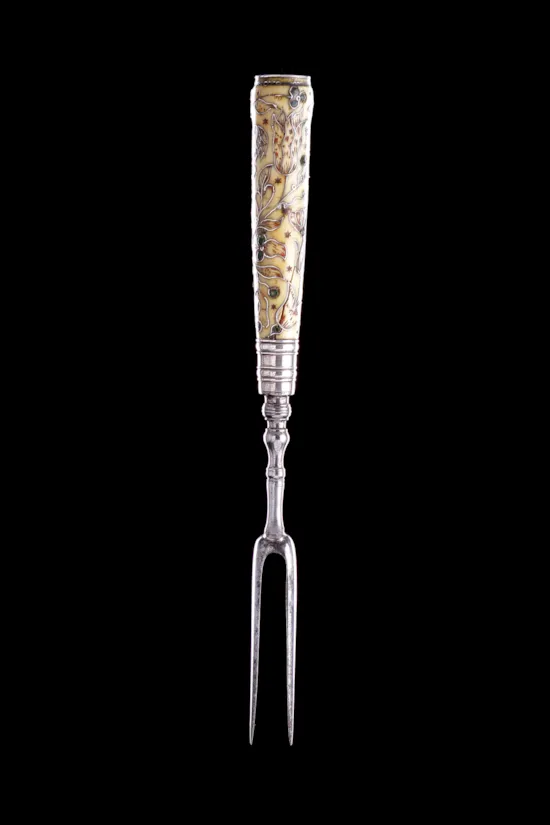
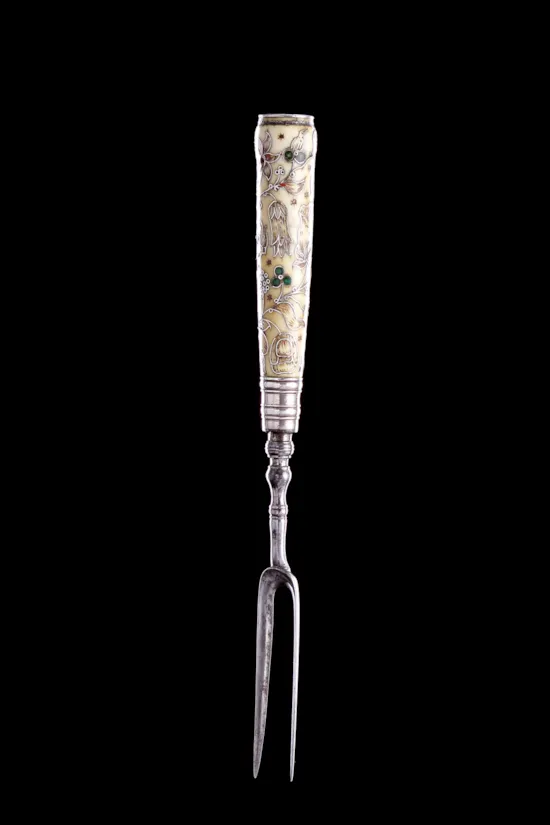
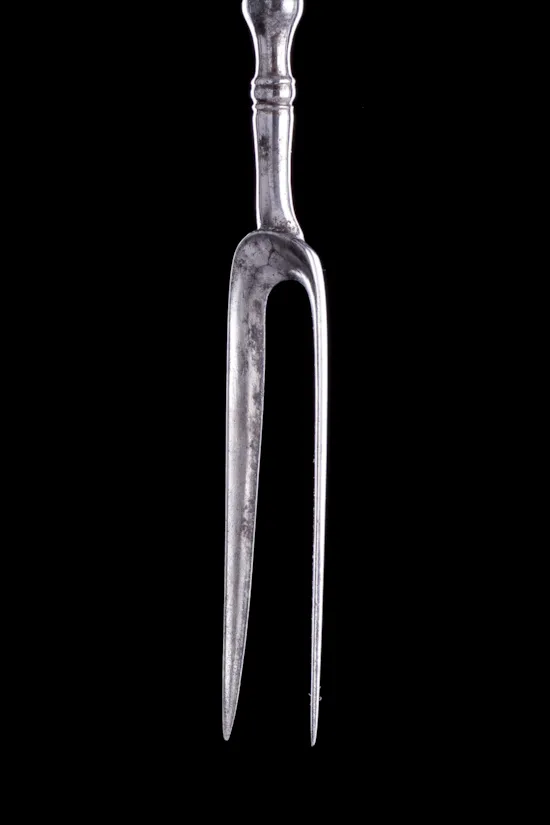
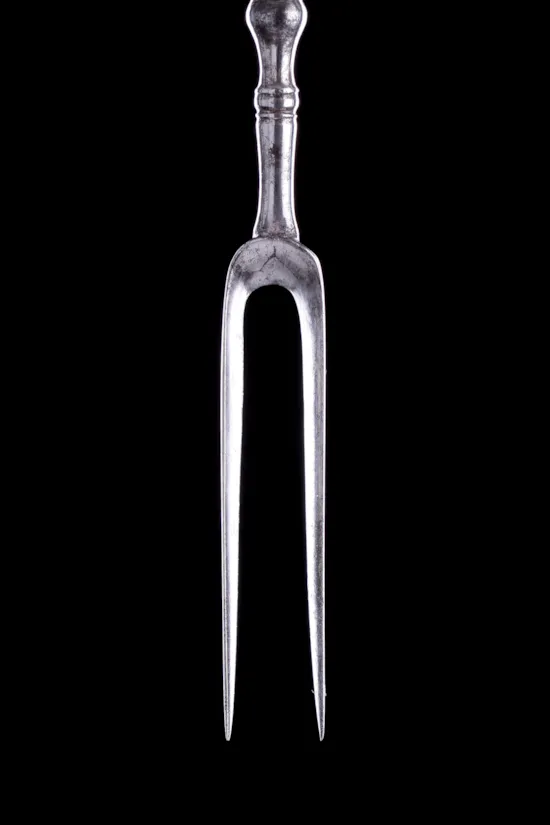
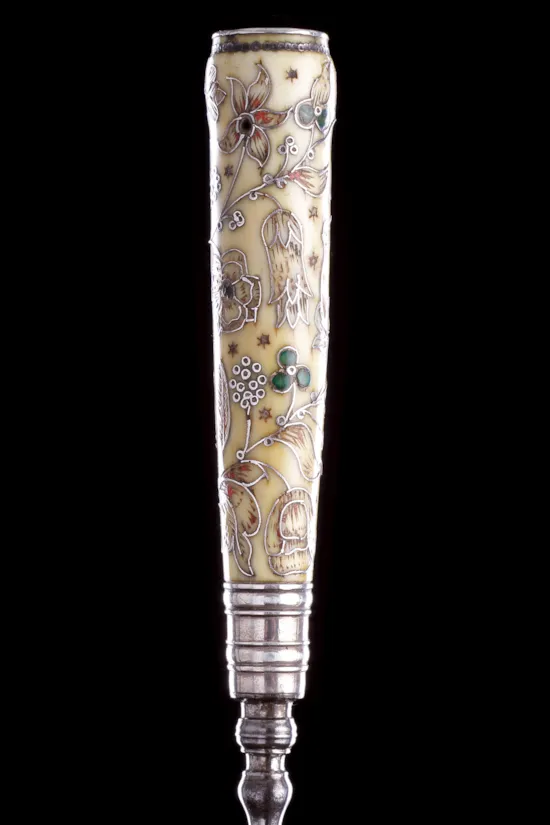
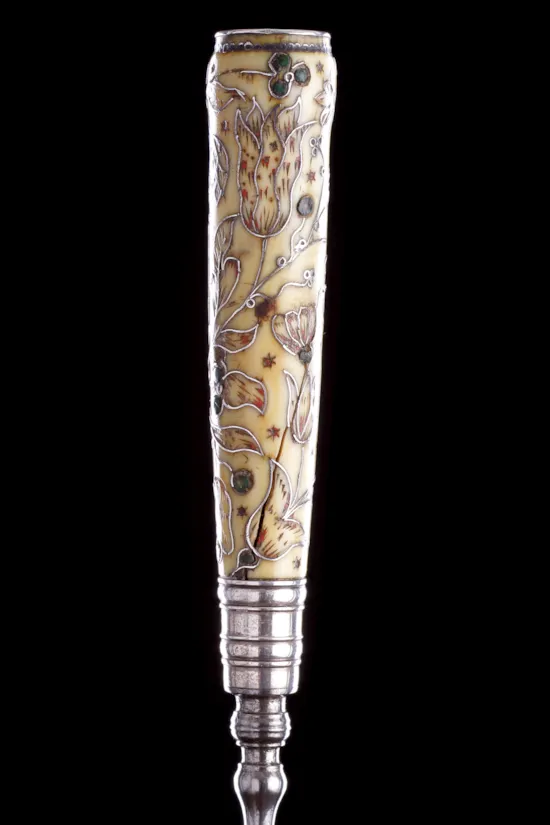
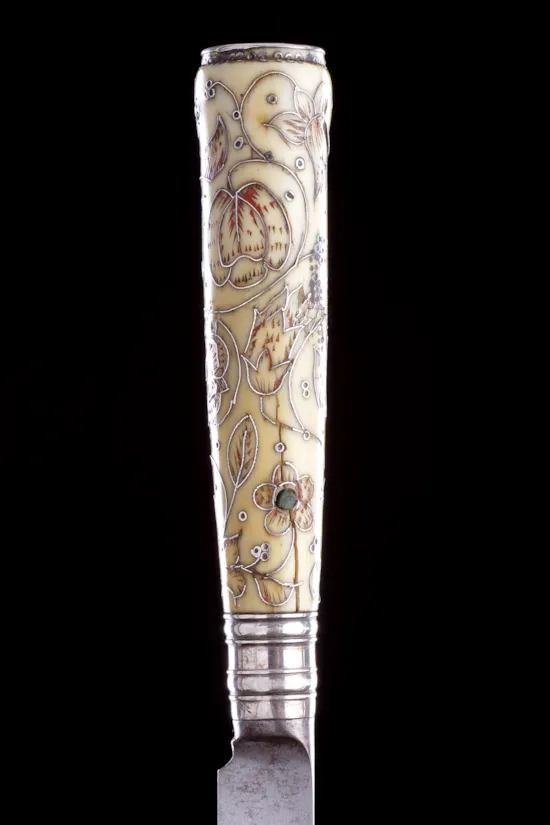
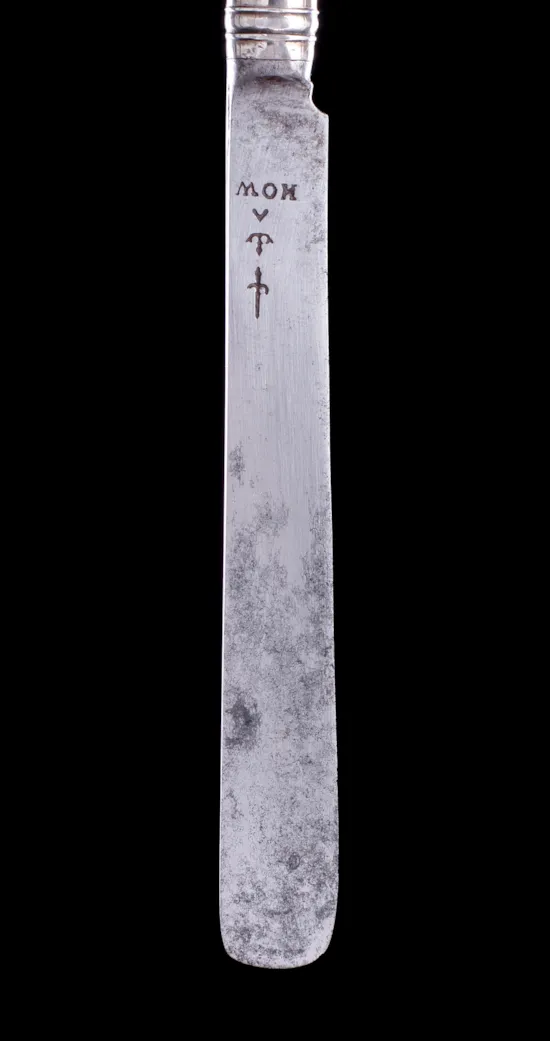
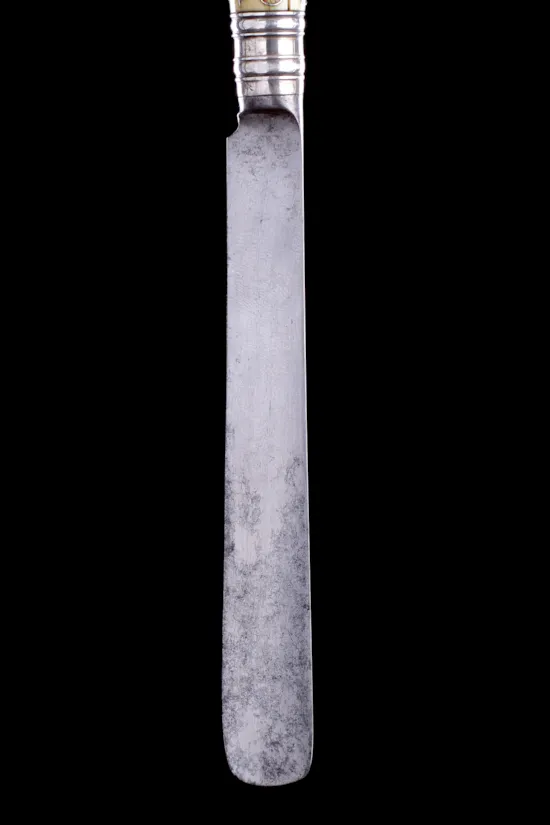
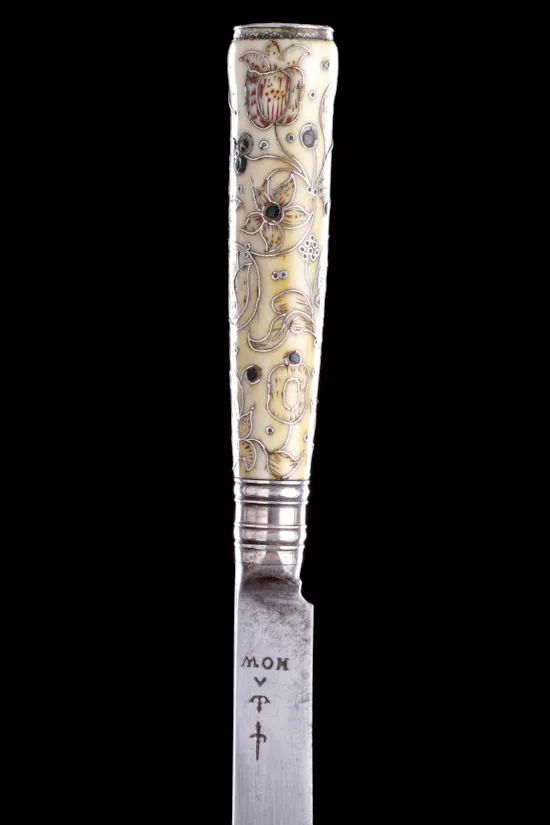













YOU MAY ALSO LIKE

